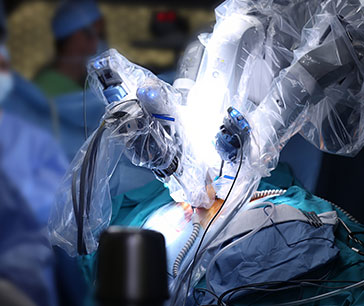Table Of Contents
- A Panorama of the Pharmaceutical Industry in 2024
- Rising Importance of Mergers and Acquisitions
- AI and Automation to Rule the Pharmaceutical Industry
- Precision Medicine to Make a Market
- Blockchain Revolutionizing the Pharmaceutical Landscape
- The Impact of Digital Health Integration on Healthcare
- Pharmaceutical Industry's Digital Transformation through Cloud Adoption
- Flexible Production Strategies in Pharmaceutical Industry
- The Evolving Landscape of the Medical Device Industry in 2024
- Key Trends Expected to Shape the Industry
- Wearable Devices and Remote Monitoring
- Telehealth Platforms
- Data Analytics and Artificial Intelligence (AI)
- Personalized Medicine and 3D Printing
- Strategies Adopted by Market Players in the Personalized Medicine Market (2020-2022)
- Changing Regulatory Landscape
- Innovations Driving Industry Growth
- Artificial Intelligence in Diagnostics
- Implantable Medical Devices
- Robotic Surgery
- Future Prospects and Emerging Opportunities
- Surgical Equipment Sector Outlook for 2024
- Technological Advancements and Market Dynamics
- Key Trends and Product Launches in 2024
- Paving the Future of Life Sciences in 2024

Roshan Deshmukh

Pooja Parvatkar
The Life Sciences Industry in 2024: Markets, Prospects, and More

The life sciences industry, encompassing the dynamic and ever-evolving sectors of pharmaceuticals, medical devices, and surgical equipment, has been on an extraordinary journey, with striking innovations and transformative growth. In 2023, the industry faced challenges and opportunities, with the post-COVID-19 pandemic era acting as a catalyst for accelerated advancements. The industry witnessed unprecedented challenges and transformative trends in 2023. With the relaxation of the pandemic, the industry recognized the imperative need for digital advances, rapid regulatory adaptations, and a heightened focus on healthcare equity. In 2024, the life sciences sector is likely to make many more remarkable innovations, facing significant challenges and opportunities. Allied Market Research (AMR) has taken an initiative to highlight key trends, strategies, and advancements that are expected to shape the landscape of life sciences sector in 2024, covering various domains such as pharmaceuticals, medical devices, and surgical equipment.
A Panorama of the Pharmaceutical Industry in 2024
The pharmaceutical industry, a cornerstone of global healthcare, is poised for a transformative journey in 2024. This industry, known for its strict regulations, intricate supply chains, and extensive research and development processes, is undergoing a significant transformation through digitalization. In an era where technology is reshaping every aspect of our lives, the pharmaceutical sector is leveraging digital transformation to improve research and development, optimize manufacturing processes, enhance patient outcomes, and streamline operations.
Rising Importance of Mergers and Acquisitions
Mergers and acquisitions (M&A) play a pivotal role in shaping the competitive landscape, driving innovation, and ensuring sustainable growth in the pharmaceutical industry. Key deals in 2023 underscore the industry's focus on strategic acquisitions and expansions, reflecting a commitment to addressing evolving healthcare needs.
As the pharmaceutical industry strides into 2024, the integration of technological advancements, precision medicine, blockchain integration, digital health transformation, and strategic M&A activities positions it at the forefront of global healthcare innovation. The industry's resilience and adaptability promise a future where medical breakthroughs are accelerated, patient care is personalized, and healthcare delivery is more efficient and accessible.
AI and Automation to Rule the Pharmaceutical Industry
The year 2023 witnessed the ascent of Artificial Intelligence (AI), and its upward trajectory is set to continue reshaping the pharmaceutical landscape in 2024. Generative AI, a key player in drug discovery, enables faster and more efficient molecule design and optimization, revolutionizing the traditional methods. Beyond drug discovery, AI's role extends into manufacturing, where it monitors extensive datasets to enhance production procedures, increase efficiency, and uphold quality control benchmarks.
AI's application in screening patient data for accurate diagnoses, developing advanced diagnostic tools, and predicting personalized therapies is on the rise. The global AI in healthcare market is expected to reach $194 billion by 2030, growing at an astonishing CAGR of 38.1% from 2021 to 2030.
Precision Medicine to Make a Market
Precision medicine, which involves treating each patient as a unique individual, will gain prominence in 2024. Advancements in genomics, big data analytics, technological innovations like CRISPR gene-editing, and ethical considerations collectively contribute to the rise of precision medicine. Progress in gene-editing technologies, especially CRISPR-Cas9, is expected to lead to advanced gene therapies and personalized medicine.
In 2024, precision oncology is set to delve into trends such as genomic profiling, liquid biopsies, immunotherapy, combinatorial therapies, patient-derived xenografts (PDX) models & organoids, along with the integration of AI and machine learning. Refinements and applications of immunotherapies, such as checkpoint inhibitors and CAR-T cell therapies, are anticipated to further evolve.
Blockchain Revolutionizing the Pharmaceutical Landscape
Blockchain technology, known for its decentralized and distributed ledger, is making waves in the pharmaceutical industry. Addressing challenges like transparency, traceability, and data security, blockchain simplifies regulatory compliance. It provides a transparent record of transactions, streamlining auditing processes, and reducing the risk of fines. The decentralized nature of blockchain enhances the integrity of regulatory submissions, contributing to a more efficient and trustworthy pharmaceutical ecosystem.
The Impact of Digital Health Integration on Healthcare
The integration of digital health technologies, including electronic health records (EHRs), telemedicine, wearable devices, and health apps, marks a transformative era in healthcare. EHRs replace traditional paper-based systems, enhancing accessibility, communication, and reducing errors associated with manual record-keeping. Telemedicine services, health apps, and wearables contribute to real-time consultations, remote monitoring, and proactive health management.
Digital health integration acts as a catalyst for improved patient outcomes, increased accessibility, and more efficient healthcare delivery. Ongoing collaboration between healthcare providers, technology developers, and regulatory bodies ensures the continued evolution of digital health, promising personalized, effective, and accessible medical interventions.
Pharmaceutical Industry's Digital Transformation through Cloud Adoption
The pharmaceutical sector, known for its stringent regulations and extensive data demands, is undergoing a revolutionary shift with the growing embrace of cloud technologies. Cloud computing, offering scalability and cost-effectiveness, proves instrumental in managing vast datasets, from genomic information to supply chain data. This surge in cloud adoption signifies a digital renaissance, reshaping drug discovery, development, and delivery by providing agility and connectivity crucial for navigating modern research complexities. Anticipated outcomes include accelerated innovation, heightened collaboration, and an overall more efficient pharmaceutical ecosystem, promising improved patient outcomes and a brighter future for healthcare.
Flexible Production Strategies in Pharmaceutical Industry
Flexible production emerges as a key driver of innovation, allowing pharmaceutical companies to navigate market complexities and respond to changing demand dynamics efficiently. Agile and modular manufacturing systems optimize production volumes, reduce lead times, and manage fluctuations in market demand. This adaptability ensures a responsive approach to changing market dynamics, facilitating innovation and enhancing supply chain resilience.
The Evolving Landscape of the Medical Device Industry in 2024
The medical device industry, a cornerstone of healthcare advancements, is poised for significant transformations in 2024. Propelled by emerging technologies, regulatory changes, and a global shift toward personalized medicine, this industry is continuously pushing the boundaries of technology and innovation to enhance patient care.

Key Trends Expected to Shape the Industry
Wearable Devices and Remote Monitoring
- Patient Empowerment: Wearable devices, from smartwatches to fitness trackers, are becoming ubiquitous. Integrated with medical devices, these wearables empower individuals to actively monitor their health, fostering a proactive approach.
- Chronic Disease Management: Wearables play a pivotal role in managing chronic diseases. Continuous monitoring enables timely interventions, reducing hospitalizations, and contributing to more personalized treatment plans. For instance, the future presents a concerning trajectory with rising cases of diabetes, fueled by sedentary lifestyles, unhealthy dietary habits, and an aging population, posing significant challenges to global public health. Urgent preventive measures and increased awareness are essential to mitigate the growing burden of diabetes and its associated complications.
Telehealth Platforms
- Remote Consultations: Digital health integration facilitates widespread adoption of telehealth platforms. Connected medical devices like digital stethoscopes and glucometers empower healthcare professionals to remotely conduct consultations, monitor patients, and modify treatment plans, eliminating the necessity for in-person visits. This becomes especially crucial in scenarios where physical distance or mobility issues present obstacles to conventional healthcare services.
- Data Sharing and Collaboration: Telehealth systems promote collaboration among healthcare practitioners by facilitating smooth sharing of patient information. This instantaneous transfer of data enhances decision-making and ensures better continuity of care, particularly in intricate cases involving various specialists.
Data Analytics and Artificial Intelligence (AI)
- Diagnostic Enhancements: Integration of digital health technologies with medical devices enhances diagnostic accuracy. AI algorithms analyze vast datasets from imaging systems, identifying patterns for faster and more precise diagnostics.
- Predictive Analytics: Incorporating digital health enables the application of predictive analytics. Through ongoing monitoring of patient data, AI algorithms can detect patterns, anticipate potential health issues, and facilitate preventive measures. This proactive strategy proves especially beneficial in overseeing chronic conditions and averting complications.
Personalized Medicine and 3D Printing
The convergence of personalized medicine and 3D printing in medical devices reshapes medical treatments. This collaboration enables the creation of personalized implants tailored to individual patients, streamlines surgical planning with anatomical models, and ensures highly customized medical interventions.
Strategies Adopted by Market Players in the Personalized Medicine Market (2020-2022)
In the future, an extended scope for the integration of personalized medicine and 3D printing is anticipated. This collaborative approach is poised to broaden its use, ranging from crafting personalized drug formulations to creating functional tissues and organs. This synergistic alliance not only aims to improve treatment results but also envisions a healthcare era characterized by interventions precisely tailored to the distinct characteristics and requirements of each patient.
Changing Regulatory Landscape
The regulatory landscape for medical devices has evolved significantly, with increased emphasis on safety and efficacy. Global regulatory bodies are adopting more stringent measures to ensure the quality and performance of these devices, emphasizing a risk-based approach and post-market surveillance.
Innovations Driving Industry Growth
Artificial Intelligence in Diagnostics
In recent years, the emergence of Artificial Intelligence (AI) in healthcare has been a boon for the medical diagnostics sector, reshaping disease identification, prognosis, and treatment planning. AI, especially in diagnostic imaging, accelerates disease detection, improves accuracy by analyzing medical images, and enhances overall healthcare efficiency. Innovations like GoForward, Inc.'s AI-based CarePod, a portable clinic offering various health tests and virtual doctor consultations, signify a potential paradigm shift in healthcare delivery.
Implantable Medical Devices
In the rapidly evolving healthcare landscape, implantable medical devices are gaining prominence by offering creative solutions to monitor, treat, and enhance the well-being of patients with diverse medical conditions. Progress in materials science, along with miniaturization technologies like nanotechnology and bionic implants, has fostered the creation of groundbreaking implantable devices.
Robotic Surgery
Robotic-assisted surgical systems are likely to gain popularity for precision and minimally invasive capabilities. For instance, Intuitive Surgical's da Vinci stands as the most extensively utilized surgical robotic system in the United States, with an estimated completion of approximately 1,875,000 diverse surgical procedures worldwide by surgeons in hospitals, concluding on December 31, 2022.
The global market for surgical robotics reached $78.8 billion in 2022 and is expected to achieve $188.8 billion by 2032, exhibiting a noteworthy compound annual growth rate (CAGR) of 9.1% from 2023 to 2032. The rise of robotic surgery represents a substantial prospect within the surgical equipment industry, holding the potential to transform conventional surgical methodologies.

Future Prospects and Emerging Opportunities
- Nanotechnology in Medical Devices: The integration nanotechnology into medical devices is predicted to revolutionize diagnostics, treatment modalities, and patient care. Nanoscale innovations will enhance diagnostic imaging precision, facilitate drug delivery systems, and contribute to personalized and precise healthcare.
- Augmented Reality (AR) and Virtual Reality (VR): AR and VR technologies are likely to find applications in medical device training, surgical planning, and patient education. These immersive technologies will offer a realistic and interactive environment, improving skills and enhancing patient outcomes.
- Generative AI in Healthcare: Generative AI is foreseen to expand across healthcare with use cases addressing organizational pain points. Developments such as healthcare pods showcase potential applications in healthcare delivery, indicating a paradigm shift.
- Sustainable and Eco-friendly Devices: An increased focus on environmental sustainability is likely to force the industry to adopt eco-friendly materials, optimize energy consumption, and implement recycling programs. Sustainability initiatives are likely to align with corporate social responsibility and resonate with environmentally conscious consumers.
Surgical Equipment Sector Outlook for 2024
The surgical equipment industry, an integral part of the medtech market, has experienced heightened prominence, particularly spurred by the global pandemic in 2020. While facing initial challenges from COVID-19, including supply chain disruptions and reduced budgets for innovation, the industry demonstrated resilience, acting as a catalyst for accelerated growth. The post-pandemic landscape of 2023 showcased the industry's capability to enhance patient outcomes and streamline healthcare processes, attracting significant attention from investors. As we delve into 2024, the surgical equipment sector remains all set for sustained expansion across various regions, underpinned by continuous innovation and strategic collaborations.
Technological Advancements and Market Dynamics
Ongoing technological advancements, spanning robotics, artificial intelligence, and 3D printing, have been driving innovation in the surgical equipment industry. From traditional tools to cutting-edge robotic systems, the commitment to overcoming challenges and pushing technological boundaries has positioned the sector for groundbreaking developments. The market has witnessed transformative trends in 2023, with product launches and mergers and acquisitions driving technological advancements, broadening product portfolios, and bolstering market competitiveness.
Key Trends and Product Launches in 2024
- Surgical Robotics and Automation: The emergence of robotic surgery stands as a transformative trend with the potential to revolutionize conventional surgical methods. Intuitive Surgical's da Vinci system has been a prevailing force globally, with millions of diverse surgical procedures performed. Competitors, including Moon Surgical, aim to gain market share through extended indications and enhanced accessibility. Moon Surgical's Maestro robot, designed for soft tissue surgeries, is set to enter the market in early 2024, anticipating FDA approval. Partnerships with Johnson & Johnson’s JJDC venture capital arm and Nvidia position the company for success, addressing the rising demand for minimally invasive surgeries.
- Augmented Reality (AR) and Virtual Reality (VR): The use of AR and VR in surgical planning and training is expected to surge, offering surgeons the ability to visualize patient anatomy in 3D. Apple's entry into this space with the Apple Vision Pro, a headset combining virtual reality and augmented reality technologies, is expected to commercialize in early 2024. This venture showcases the industry's commitment to adopting novel technologies for improved preoperative planning and enhanced understanding of complex surgical procedures.
- Smart Surgical Instruments: Surgical instruments with smart features, including sensors and connectivity, are likely to become increasingly common. These instruments provide real-time data during surgery, offering surgeons valuable insights and improving decision-making. Connectivity features facilitate seamless communication between instruments and other medical devices, contributing to a more integrated and data-driven surgical environment.
- 3D Printing: The utilization of 3D printing technology in the manufacturing of customized surgical instruments and implants is expected to rise. This approach allows for greater precision and personalization, ultimately contributing to improved patient outcomes. The industry's embrace of 3D printing will indicate a move towards more customized and patient-centric medical interventions.
- Artificial Intelligence (AI) in Surgery: AI is being explored for its potential applications in surgery, including image recognition, predictive analytics, and decision support. AI algorithms are expected to assist surgeons in diagnostics, preoperative planning, and intraoperative decision-making, heralding a new era of intelligent surgical procedures.
- Advanced Imaging Technologies: Innovations in imaging technologies, such as intraoperative MRI and CT, are likely to enhance surgical precision. Real-time imaging capabilities are expected to help surgeons navigate through complex anatomical structures more accurately, further improving patient outcomes.
- Strategic Initiatives and Industry Collaboration Manufacturers strategically investing in innovation, addressing specific healthcare needs, and collaborating with stakeholders are poised to lead in this dynamic and evolving field. The continuous engagement of consulting and data science service providers has played a pivotal role in providing cost-effective solutions to surgical equipment manufacturers. Their insights into market trends, competitive positioning, and predictive modeling for demand forecasting empower manufacturers to make informed decisions for enhanced performance and cost-effectiveness.
Paving the Future of Life Sciences in 2024
As we navigate through 2024, the life sciences industry stands at the intersection of innovation, challenges, and promising opportunities. The commitment to embracing digital technologies, navigating regulatory complexities, and addressing health inequities remains paramount. The industry's resilience and forward-thinking approach position it as a pivotal player in shaping the future of healthcare. With a focus on sustainability, patient-centric approaches, and collaborative efforts, the life sciences sector is poised to lead the way in advancing healthcare for years to come. To gain deeper insights into the industry trends, challenges, and strategic solutions, contact AMR analysts today.

